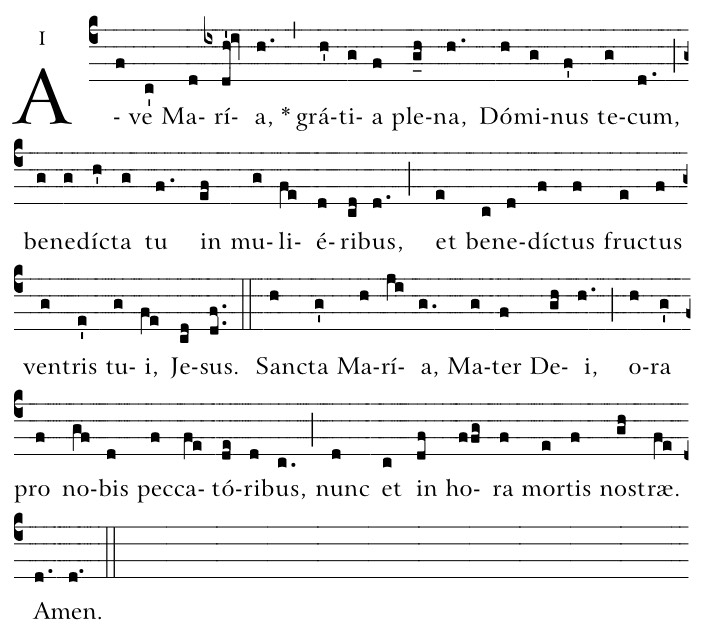Lyrics Ave Maria Latin Translation
Background It can be pretty hard to undo a first impression, right? Well, it's especially hard to undo one that has been reinforced for nearly 200 years. Many people hear the song 'Ave Maria' by Franz Schubert and assume that's how he wrote it.
Since the setting by Schubert may be their only exposure to that prayer, the myth continues unchecked. How did this happen and what's the real story? Every faith has its important creeds and prayers. In Christian denominations, one such example is 'The Lord's Prayer', which many members have memorized at an early age.

An important prayer for the Roman Catholic Church is Ave Maria or 'Hail, Mary'. It's the best known of their Marian prayers. Download Anime Shining Tears X Wind Sub Indo Mp4.
The Ave Maria is also used in the Greek Orthodox and Lutheran churches. So it's safe to say that it's recognized pretty much everywhere throughout the Christian world. The text is historically divided into two parts, with the third part being added later. The first part is based on Luke 1:28 which recounts the Angel Gabriel greeting the Blessed Virgin Mary on the day of the Annunciation.
Ave Maria composed by Franz Peter Schubert (1797-1828) & performed by Aaron Neville. Hope you enjoy.

This is when the Angel tells Mary that she will be overcome by the Holy Spirit and bear a son. The middle section is based on Luke 1:40-42 and recounts St. Elizabeth greeting Mary.
Mary, now pregnant, has gone to visit her relative Elizabeth who's also pregnant. When Elizabeth hears Mary's greeting, the baby in her own womb (who will be John the Baptist) leaps for joy. Vectric Cut2d Crack. Elizabeth tells Mary that she is blessed, as is the child she is carrying (who will be Jesus Christ). A final portion was added around 1440. It identifies Mary's holiness and adds a petition for intercession. Translation Ave Maria was originally in Latin, but here is the English translation: Hail Mary, full of grace, the Lord is with thee, blessed art thou among women, and blessed is the fruit of thy womb, Jesus.
Holy Mary, Mother of God, pray for us sinners, now and at the hour of our death. Use of the Prayer In the Catholic Church, Ave Maria is sung on the fourth Sunday in Advent (the last Sunday before Christmas), on the Feast of the Annunciation (March 25), and on the Feast of the Immaculate Conception (December 8). It's also used at weddings, funerals, Marian observations (usually held in May), and in other Masses of the Blessed Virgin Mary celebrated throughout the year. These many liturgical designations have inspired composers to create musical settings for the prayer down through the ages beginning with versions that were chanted, various congregational hymns, vocal solos, and choral arrangements. Famous Setting Perhaps the best known setting of Ave Maria is the vocal solo by Austrian composer Franz Schubert. The beautiful and soaring melody with its simple accompaniment has attracted performers and listeners for nearly 200 years.
It's usually presented during the Christmas season on special radio and television programs, and is frequently included on many holiday CDs. For many, this may be their only exposure to these words. Interesting fact to close on: Schubert never intended to set the prayer. Schubert was setting words for a seven-song cycle written in 1825. These songs were based on texts from Walter Scott's poem 'The Lady of the Lake'.
Canto III/Section XXIX is marked 'Hymn to the Virgin' and begins with the phrase Ave Maria. What follows is original material by Scott, not the words from the Latin prayer. At some point, the entire text of the Latin prayer was adapted to Schubert's music. Thanks to its popularity, many people mistakenly believe Schubert wrote it that way originally. Lesson Summary Ave Maria is an ancient and important Catholic prayer that originally had two sections based on passages from Luke 1.
A third section was added in the 15th century. The prayer is associated with Marian feasts and celebrations and is used on a regular basis throughout the liturgical year. This need has inspired many composers from all eras to set the prayer as a hymn, vocal solo, and for various choral combinations. The version by Franz Schubert is perhaps the most familiar to listeners even though Schubert did not originally intend to set the Latin prayer. Key People, Passages & Facts • Ave Maria: (translates to 'Hail, Mary') an important prayer within the Roman Catholic Church • Luke 1:28: Angel Gabriel greets the Blessed Virgin Mary on the day of the Annunciation • Luke 1:40-42: recounts St.